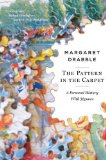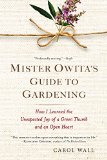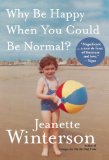Summary | Excerpt | Reading Guide | Reviews | Beyond the book | Read-Alikes | Genres & Themes | Author Bio

A Personal History with Jigsaws
by Margaret DrabbleThe jigsaw, with its frame, is a simulacrum of meaning, order and design… if you try hard enough, you can complete it. That galactic scatter of inert and inept fragments of wood or cardboard will come together and make a picture.
Books, too, have beginnings and endings, and they attempt to impose a pattern, to make a shape. We aim, by writing them, to make order from chaos. We fail. The admission of failure is the best that we can do. It is a form of progress. (Margaret Drabble)
To read The Pattern in the Carpet is to witness the wide-ranging power of a keen and curious mind. By her own admission "not a tidy writer," Margaret Drabble's "personal history with jigsaws" is a memoir for readers who are willing to stray from the path and possibly never return. It's about jigsaws, certainly, but also about history, philosophy, cartography, literature, poetry, obsession, depression, and the delight of the digression. If you like your timelines linear, your themes clearly laid out, and your narrator a reliable tourguide with a checklist, you'll likely run screaming after the first chapter. But if you're willing to surrender to her charms, you'll find that Drabble is an irresistibly eccentric guide with a rigorous curiosity and wicked wit.
She draws you in with stories of curmudgeonly old Aunt Phyl, who fostered Drabble's love of jigsaws. The backdrop is an Anglophile's dream of English country roads, winding thoroughfares, "neat and trim" villages, complete with Wellies and chipped enamel jugs. Childhood rhymes and storybooks, treasured games and dreaded maypoles, depressive parents and a beloved younger Aunt Phyl all round out a detailed but nonlinear sketch of Drabble's childhood - and the already fierce powers of observation and curiosity developing in her young mind.
Delving into the history of jigsaws, which begins in the 18th century with dissected maps mounted on boards, Drabble reflects on the boom of educational products for children that followed Locke and Rousseau's revolutionary and influential ideas about the education of children. She approaches her subjects as a scholar-cum-investigator, consulting numerous texts, historical records, and journeying into rare book rooms to glimpse crumbling artifacts. Then, suddenly, in the middle of a passage about the author of The English Jigsaw-Puzzle 1760-1890, Drabble recalls her affair with an antiquarian book dealer (a "too-much-married man") and the "brief, illicit hours" she spent with him "amidst the book stacks, in dark basements and leaking warehouses!" Both married with "too many children" between them, the affair doesn't last, but the friendship and the obsession with antique periodicals does. In just one paragraph, this remembrance breathes tantalizingly fresh air into the dusty maps, philosophy and history. Nakedly honest assessments and reminiscences inserted into the larger, snaking narrative are what make this book so deeply personal – and so oddly engrossing. Drabble is as rigorous in pursuing her personal history as she is with any other topic, which makes for a very alluring portrait. Refreshingly flawed, she comes across as the neighbor you wish would invite you in for strong tea and challenging conversation.
While it may not be tidy, The Pattern in the Carpet is certainly not messy. Think of a jigsaw puzzle spilled out on a table – it appears scattered, but there's an order somewhere in there. It's up to you to find it. You may start on one corner, get stuck, and move onto another. Perhaps you'll abandon it, leave it for a rainy day. Or maybe you'll get terribly frustrated and throw the whole thing back into the box. However you come at it, there are great pleasures and treasures to be found in the process, if only you have the patience.
![]() This review was originally published in The BookBrowse Review in October 2009, and has been updated for the
October 2010 edition.
Click here to go to this issue.
This review was originally published in The BookBrowse Review in October 2009, and has been updated for the
October 2010 edition.
Click here to go to this issue.

If you liked The Pattern in the Carpet, try these:

Mister Owita's Guide to Gardening
by Carol Wall
Published 2015
A true story of a unique friendship between two people who had nothing - and ultimately everything - in common

Why Be Happy When You Could Be Normal?
by Jeanette Winterson
Published 2013
Witty, acute, fierce, and celebratory, Why Be Happy When You Could Be Normal? is a tough-minded search for belonging, for love, identity, home, and a mother.
Show me the books he loves and I shall know the man...
Click Here to find out who said this, as well as discovering other famous literary quotes!
Your guide toexceptional books
BookBrowse seeks out and recommends the best in contemporary fiction and nonfiction—books that not only engage and entertain but also deepen our understanding of ourselves and the world around us.